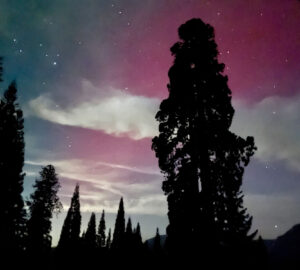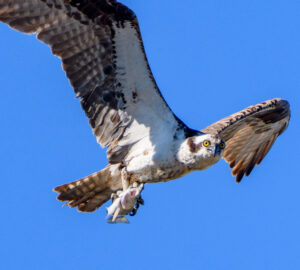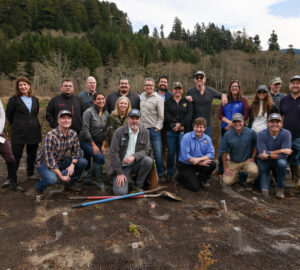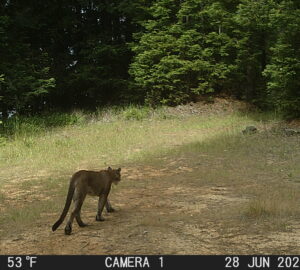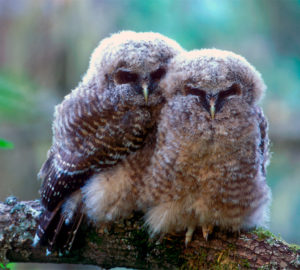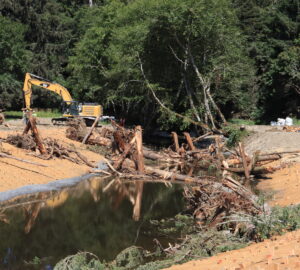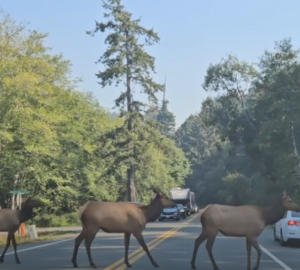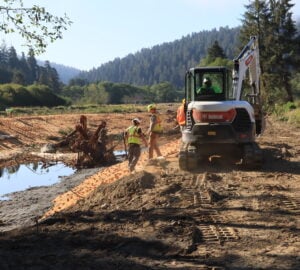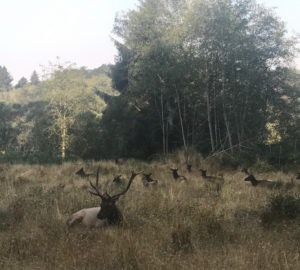
After 55 years of redwood timber production, the Orick Mill ceased operations in 2009, and in 2013, Save the Redwoods League jumped at the chance to purchase the Orick Mill Site. Although the property contains tall trees, the landscape is characterized by open space and cattle pastures. For a long time, those cattle pastures were strictly off-limits to elk. Now, as the League moved in to restore the property, elk are free to come and go as they please.
Roosevelt elk, with their shaggy, dark brown fur and cream-colored rears, are one of four surviving subspecies of elk in North America. They’re also the largest. Adults are six to ten feet long and can stand five feet tall at shoulder length. Females (called cows) stick together, forming distinct herds. Each herd has its own range, which tends not to overlap with neighboring elk.
“The Davison herd usually occupies areas to the north [of the property]…Right now, based on camera data, it’s the only herd using the Orick Mill Site,” says Floyd (Butch) Weckerly, who is a professor of biology at Texas State University.
Weckerly has studied Roosevelt elk in Redwood National Park for over twenty years, starting in the 1990’s while teaching at Humboldt State University. Currently, he’s conducting a 3-year elk study on the property. “We want to see how frequently they are using [the pasture], and what sort of impacts they’re having on the mill site and forest plants,” Weckerly says. “We’re also documenting how the elk herd is changing in terms of abundance.”
To monitor elk activity, wildlife cameras are set up around the pasture — views include a rocky driveway leading up to a gate, a pathway abutting a fern-carpeted ravine wall, and the verdant pasture itself. Browsing the photo archive, one might be disappointed at first sight: dozens of photos are “blank,” triggered by branches moving in the wind, or maybe a bird. Other times, people, unaware of the cameras, stroll past.
But there are plenty of elk photos, too. In each frame, a few dozen elk swarm the landscape. In some photos, they appear to be idling, taking slow steps in between grazing. Occasionally, an elk extends her long, sturdy neck to look around.
This study is partly motivated by concern for the Davison herd — if the elk are suddenly exposed to a new food source, will the herd grow beyond its capacity? It wouldn’t be unprecedented: Nearly two decades ago, the League purchased Davison Dairy Farm and removed its fences. Soon after, elk were using the land for forage. Over time, their population began to grow, peaking at nearly 80 individuals.
“The herd displayed what’s called a classic population eruption,” Weckerly says. Then, after the initial increase, the Davison herd began to shrink. “The elk probably overrate their food supply. That precipitated their decline over a ten year period of time.”
Will Orick Mill Site trigger another rise and fall in the Davison herd population, paralleling what happened two decades ago?
“That’s one of our concerns—we don’t want to cause an eruption on the elk population,” says Christine Aralia, a land project manager at Save the Redwoods. She is taking a level-headed approach: “We need to make sure to manage the forage over time in a way that doesn’t create too much forage or removes it too fast. We’re going to try to see how that transitions over time.”
Learn more about the wildlife found in the redwood forest and the quirky critters spotted on the League’s wildlife cameras.

